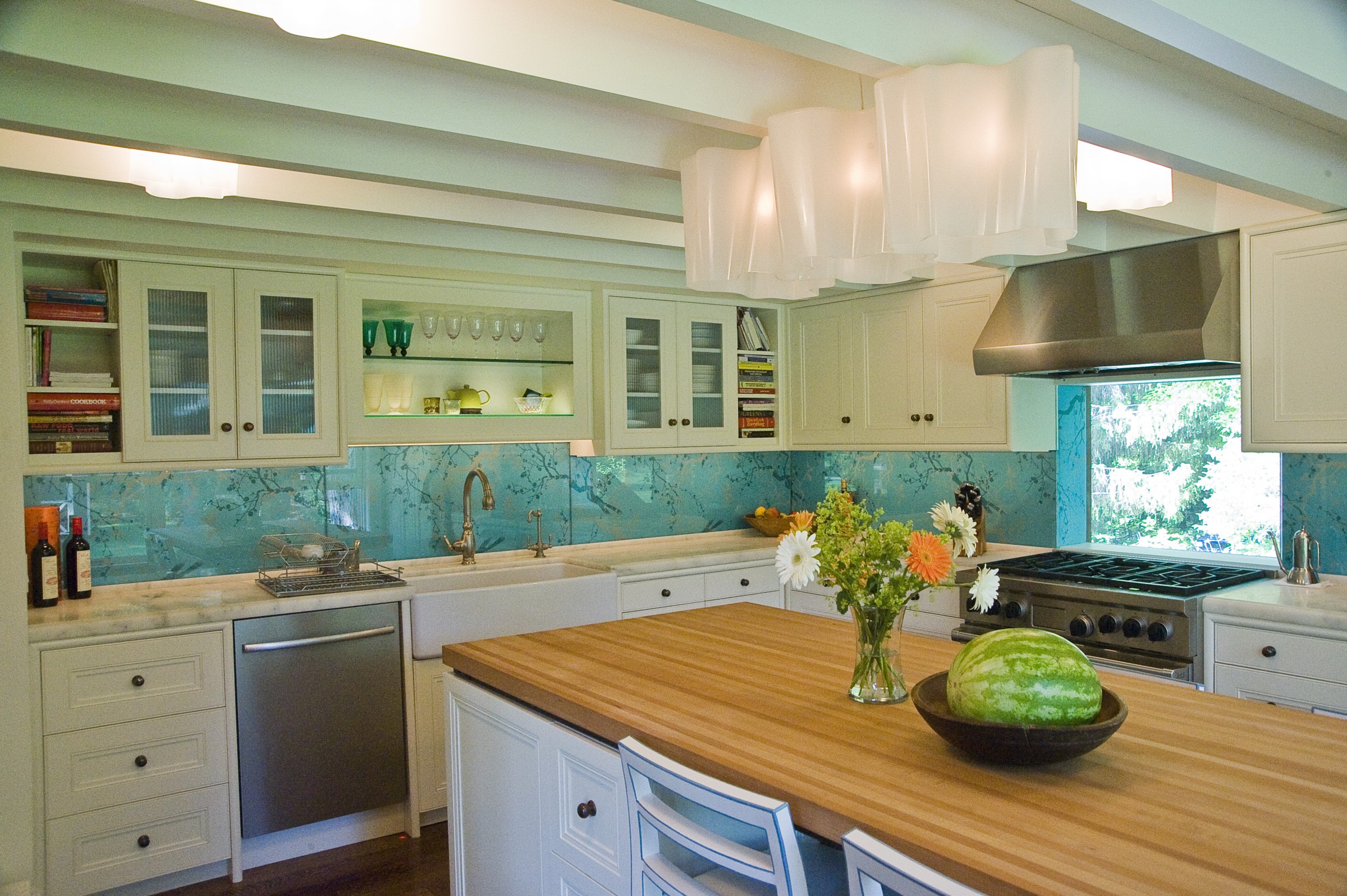This backsplash kitchen design in the Berkshires evolved from a client’s affection for some upholstery fabric in her living room.
I have never scrubbed a backsplash, nor can I remember ever wiping a significant splash off a backsplash. And I’ve never known anyone who’s had a backsplash disaster. So — why are we so glued to the tile concept when, in designer kitchens, we think about backsplashes?
Recently I was asked what the grout line width should be in a backsplash, and whether the grout must be an epoxy grout to prevent staining. My opinion was that it really didn’t matter. However, I had to wonder — what went on in that kitchen? Was it one of the chaotic commercial kitchens described by the late, great Anthony Bourdain in Kitchen Confidential? Still, some clients insist on a surface that can withstand a 3-year-old with a baseball bat. We can certainly create that — but let’s be sure it looks good and functions well.
Let’s consider some options.
For one kitchen backsplash, we selected a commercially-rated, wood-grain flooring material, impervious to everything, with a distinctive, dark grout. It looks great: clean, vertical lines with a wood grain accent.
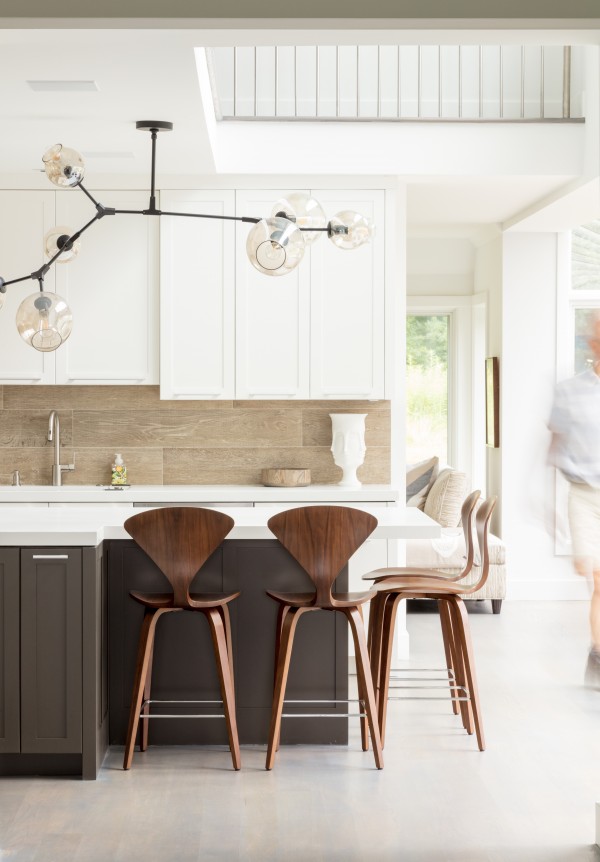
This backsplash uses flooring tile for a strong horizontal stretch, with an earthy tone and light grout.
A client’s wild idea worked.
Another client fell in love with an expensive light blue fabric that I had selected as part of their sofa pillow mix. She asked if we could use this fabric on the backsplash. My initial instinct was no, but I hesitated. We’ve learned, over and over, that what seems like a crazy idea can lead to a brilliant concept. Could this work?
I considered ways to make it work: laminating the fabric would give the material a coated cleanable surface, which we would install like wallpaper. Not ideal, but what about glass? Yes: ½” thick glass would provide an impervious finish (better looking than ¼” or 3/8”- size). But there was another challenge: wicking. If that glass and fabric met the countertop, water could seep up behind the glass into the fabric: disaster. So, we designed a simple ½” shoulder from the stone countertop, and the glass rests on this small, nearly invisible raised element. It worked and there it sits. It is probably one of the most effective and dramatic backsplashes we have ever done. This is a perfect example of why I listen to my clients’ “crazy” ideas — often they are brilliant.
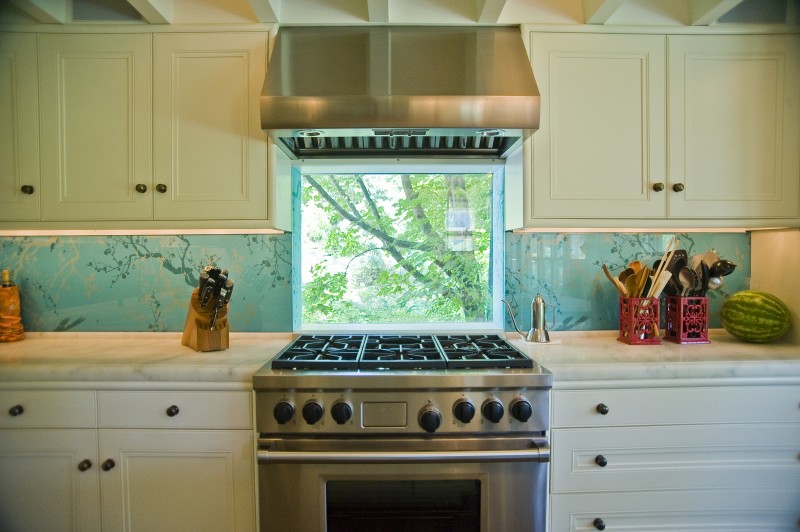
A closer look at the fabric backsplash also pictured above.
Bring the outside in.
An uncased, thermopane window is my favorite backsplash, as it brings in light and the outdoors. We used it in our fabric backsplash kitchen and we’ve done many other — our fantasy kitchen has only windows as “backsplashes.”
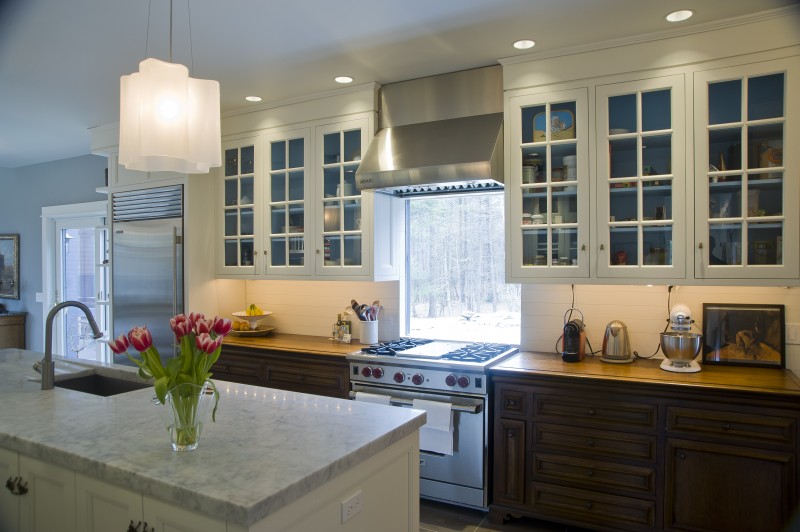
Shiplap wood also works for the backsplash. Note also the window as backsplash above the stove.
Stone brings drama.
For a dramatic impact, slab stock stone that wraps the counter and up the wall is impossible to stain and can be finished with olive oil; baking soda or sandpaper can eliminate any fine etching. Subway tile is classic and works in many kitchens. Fabric, or a dramatic paint color, behind ½” glass gives you a striking feature. Properly detailed, this is a great effect and can be the star of the kitchen show.
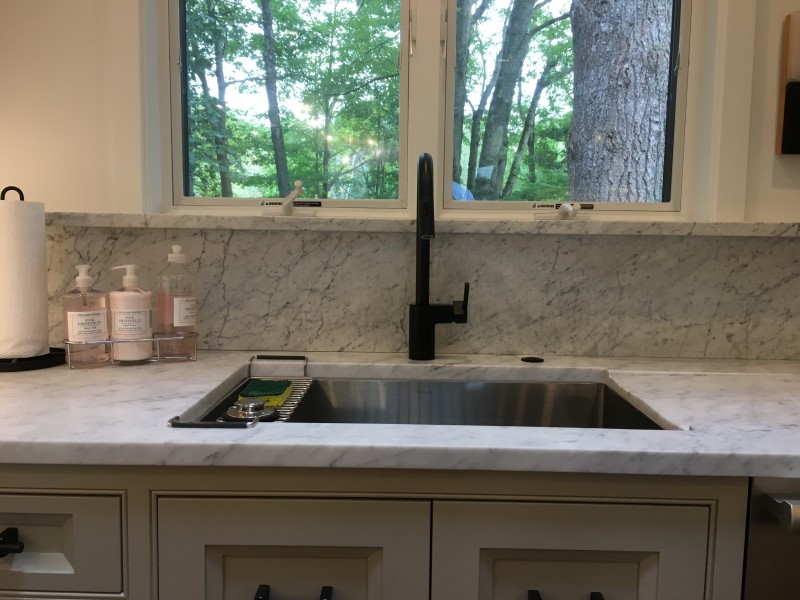
In this kitchen, the marble countertop is carried into the backsplash, ending beneath a marble shelf, giving definition to the space.
The origami effect can be achieved with various materials, installed in a variety of planes; the sculptural effect is completely unique and interesting. Typically, it’s used in secondary spaces away from the sink or range, for easy cleaning. In this design, the smaller compact kitchen lent itself well to this 3D feature.
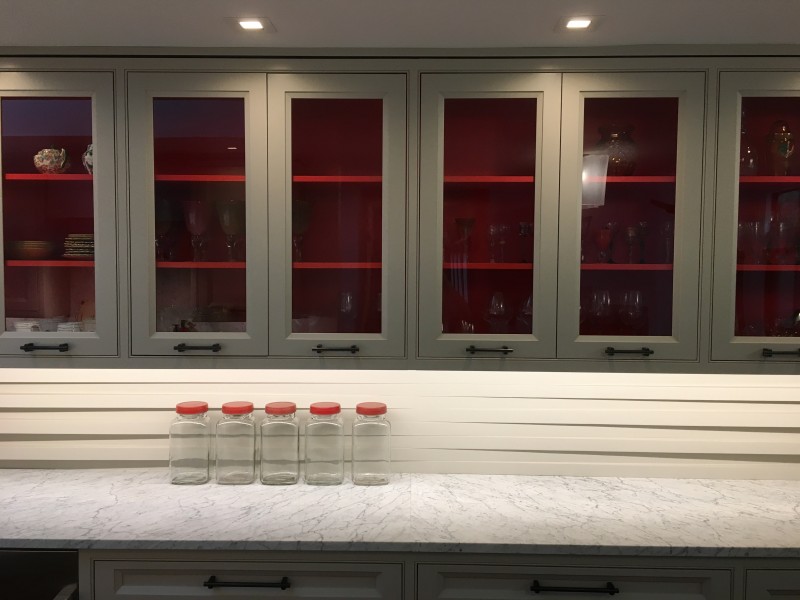
The origami effect was created in this wood backsplash, with dramatic under-the-counter lighting to show off the dimension.
Clearly, backsplashes can be anything, everything or nothing at all, so you can explore lots of options for materials. Shiplap wood, painted in a satin finish, with or without a gap between pieces, is beautiful. Large format tiles are fun, but should always be flush with the corners and drywall.
As for the details, here are some examples and guidelines:
- If you are tiling, don’t wrap your countertop material up the wall 4” — it’s like wearing argyle socks with shorts. Bring the backsplash material right down to the counter — it’s a much better look.
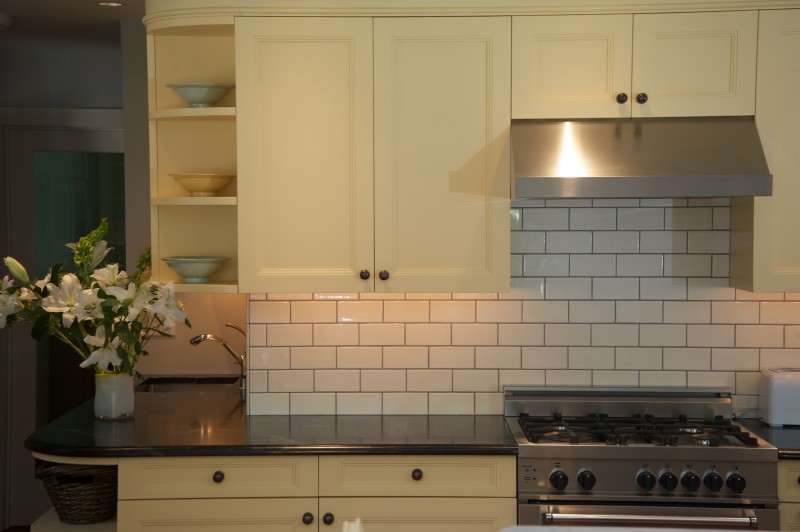
Subway tile is a classic for many kitchens. Note the under-counter lighting.
Don’t interrupt your backsplash with switches, outlets and old-fashioned phone jacks. Instead, run a plug mold on the underside of your cabinets or shelving. You will have more plugs, they will be hidden and closer to where you need them.
- If you have no upper counters or shelving in a section, keep the outlets discreet by placing them very low, horizontal and in a finish that merges into the splash.
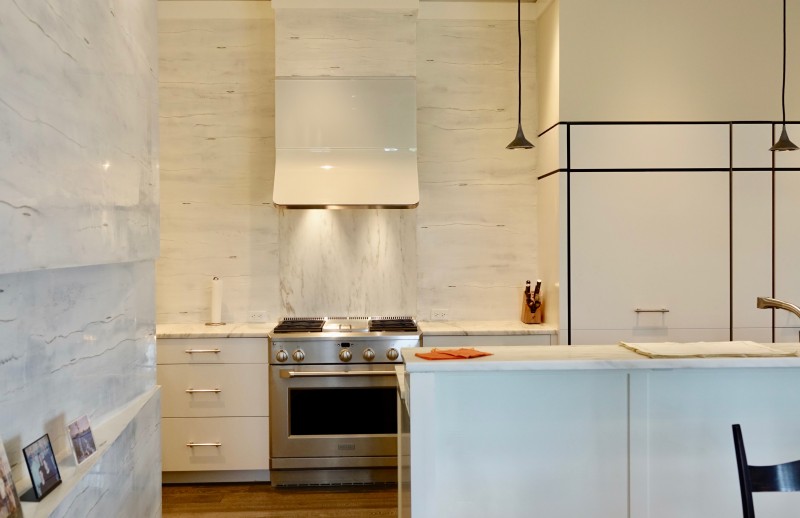
This kitchen pairs marble with a veneer plaster that resembles birch. Note that the electrical outlets are low, horizontal and nearly invisible near the stove.
- The switches for under-cabinet lights? Place them on the underside of the shelf or cabinet. After the first day, you will always know where to find them. Or, in the case of a full renovation, put that switch with the bank of kitchen switches on the wall. You can even connect it to the same switch as your kitchen light.
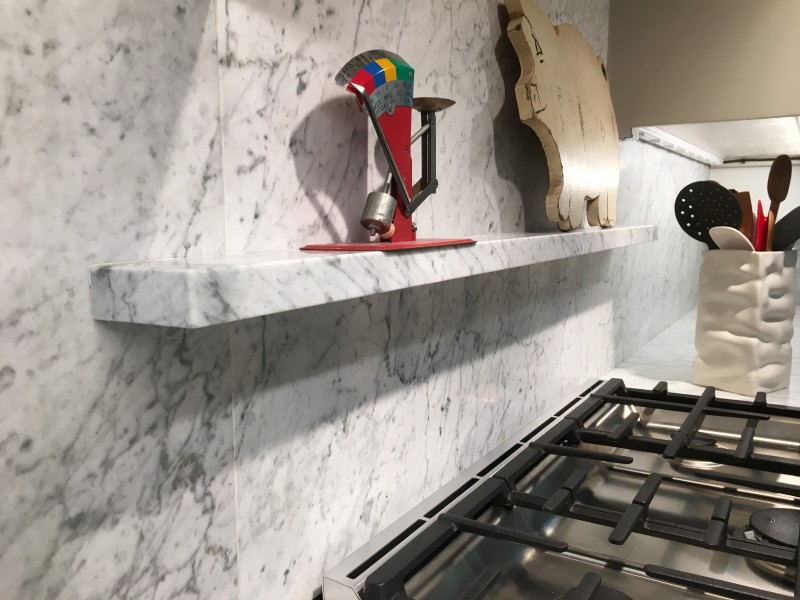
And remember, no idea is too outlandish to consider.
A colleague who worked in my office for several years was a fine artist with multiple talents, but she had not a second of formal interior design training. She often proposed the most outlandish ideas. My responses were often these: “How do you expect us to execute that, Nancy?” “That is totally impossible!” “Do you know what that would cost?” “That will get us fired for sure!”
In fact, her ideas were brilliant and we often delved into them a couple of days after I had shot them down, and we made them work; this reinforced my awareness that the best interior designers take cue from the clients. These out-of-the-box concepts represent some of our best work — they are truly creative.

William Caligari
Read this article in The Berkshire Edge
